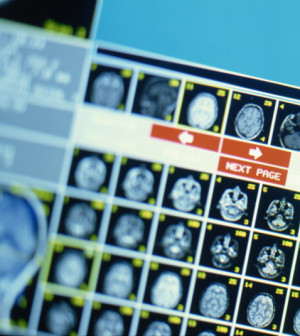- Navigating Your Midlife Crisis: Embracing New Possibilities
- City Raccoons Showing Signs of Domestication
- Mapping the Exposome: Science Broadens Focus to Environmental Disease Triggers
- One Week Less on Social Media Linked to Better Mental Health
- Your Brain Changes in Stages as You Age, Study Finds
- Some Suicide Victims Show No Typical Warning Signs, Study Finds
- ByHeart Formula Faces Lawsuits After Babies Sickened With Botulism
- Switch to Vegan Diet Could Cut Your Greenhouse Gas Emissions in Half
- Regular Bedtime Does Wonders for Blood Pressure
- Dining Alone Could Mean Worse Nutrition for Seniors
Health Highlights: March 25, 2015


Here are some of the latest health and medical news developments, compiled by the editors of HealthDay:
New Anthrax Drug Approved by FDA
A new drug to treat inhalation anthrax has been approved by the U.S. Food and Drug Administration.
Anthrasil was approved to be used in combination with appropriate antibacterial drugs. Anthrasil testing was limited to animals, because it was not feasible or ethical to test it in people, the FDA said.
Inhalation anthrax can occur after a person is exposed to infected animals or contaminated animal products, or as the result of the intentional release of anthrax spores in a bioterrorism attack. The anthrax bacteria mutiple in the body and produce toxins that can cause extensive and irreversible tissue damage and death.
Anthrasil is made from the plasma of people vaccinated against anthrax. The plasma contains antibodies that neutralize the toxins produced by anthrax bacteria.
“Today’s approval provides an important additional treatment to other FDA-approved therapies for inhalational anthrax, a life-threatening disease,” Dr. Karen Midthun, director of the FDA’s Center for Biologics Evaluation and Research, said in an agency news release.
“This product will be stored in U.S. Strategic National Stockpile to facilitate its availability in response to an anthrax emergency,” she added.
—–
Blue Bell Ice Cream Products Recall Expanded
A recall of Blue Bell Ice Cream products linked with cases of foodborne illness has been expanded to include products from the company’s plant in Broken Arrow, Okla.
The initial recall included 10 products produced at Blue Bell’s plant in Brehnham, Texas. The expanded recall includes three flavors — chocolate, strawberry and vanilla — of three-ounce cups of ice cream made at the Oklahoma plant, the Associated Press reported.
One of the cups was found to be contaminated with listeriosis. The cups are not sold in retail stores, but are sold to institutions in 23 states.
The initial recall was announced after five people who had been patients at Via Christi St. Francis hospital in Wichita, Kan., became ill with listeriosis, and three of them died, the AP reported.
—–
Oldest Evidence of Breast Cancer Found in Egypt
The oldest evidence of breast cancer in the world has been found in the skeleton of an adult woman who lived in southern Egypt more than 4,200 years ago.
The woman’s bones show evidence of extensive damage caused by breast cancer as it spread throughout her body, according to the Egypt Ministry of Antiquities.
The severity of the disease meant she couldn’t do any kind of labor, but she was treated and cared for over a long period until she died, researchers said.
The woman lived at the end of the 6th Dynasty (2,200 BCE) and was a member of the elite in the southernmost town of Egypt, Elephantine. Her remains were found in the necropolis of Qubbet el-Hawa.
—–
Distractions a Major Cause of Teen Car Crashes: Study
Talking with passengers, using cellphones and other distractions play a much larger role in crashes involving teen drivers than previously believed, a new study finds.
Researchers analyzed nearly 1,700 videos of teen drivers before they were in a crash and found that distractions were a factor in 58 percent of moderate to severe crashes. That’s four times higher than previous estimated based on police reports, according to NBC News.
The most common types of driver distraction were talking or doing other things with passengers, and using a cellphone to talk, text or check messages, the AAA Foundation for Traffic Safety study said.
Other types of distractions included drivers switching their attention from the road to something inside the car (10 percent), looking at something outside the car other than the road ahead (9 percent), singing or moving to music (8 percent), grooming (6 percent), and reaching for an object (6 percent), NBC News reported.
Copyright © 2025 HealthDay. All rights reserved.










